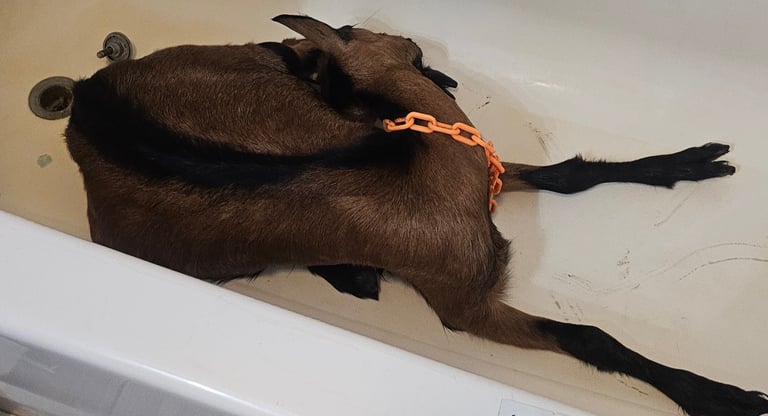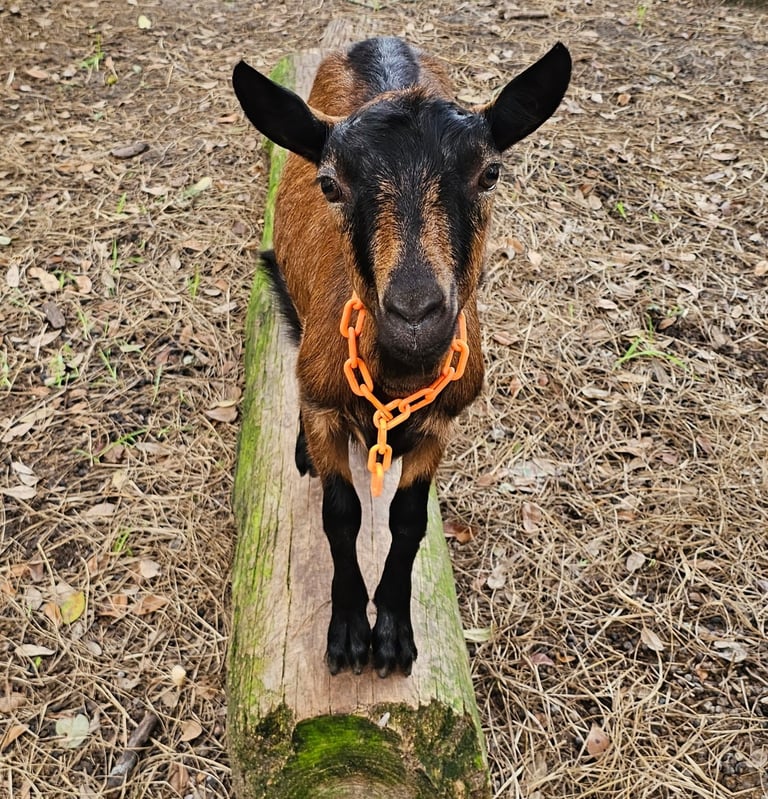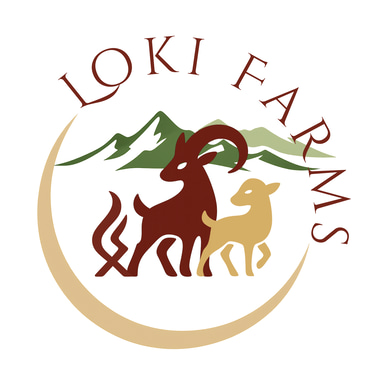Tilly’s Close Call: What We Learned About Goat Polio and Acting Fast
learn about goat polio/polioencephalomalacia with us
10/9/20252 min read


On September 27th in the evening, we noticed something a little off with Tilly, one of our Oberhasli does. We had just moved the buck out of her pen, so at first we chalked it up to stress from the change. By the next morning, though, it was clear something wasn’t right.
She was circling, running into corners and getting stuck there, pressing her head, and drooling. Classic neurological signs that can point to Polioencephalomalacia (goat polio) or Listeriosis. We started her on vitamin B complex injections right away, hoping it was polio since thiamine deficiency is often treatable if caught early.
Six hours later, she was down. At that point, we were preparing for the worst and leaning toward Listeriosis as the cause. We tried to reach the vet, but he was out of town and wouldn’t be back until the next day. We brought Tilly inside so we could monitor her more closely and keep her comfortable. The bathtub actually works well for this for us to help prop them up as they need to be kept sternal if they can't do it on their own.
At her next dose, six hours later (her third injection) her condition hadn’t improved, and her right eye had started to swell. I honestly didn’t think she’d make it until morning, but the vet was still unreachable. Then, about an hour and a half later, she surprised us. She started trying to get up. A few hours later, she was nibbling on food and the drooling had stopped.
By her fourth dose, she was standing on her own again. She was still wobbly and uncoordinated, but alert, eating, and walking with purpose instead of circling. That was the turning point and the moment we knew the vitamin B complex was working. Over 12 hours after the first dose.
It confirmed what we’d hoped, though, that this wasn’t Listeriosis, but goat polio, and she was recovering. Listeria needs antibiotics to treat, so it getting better without was great news. We didn't need the vet out for the expensive emergency call anymore, and could continue treating as we were.
What Is Goat Polio (Polioencephalomalacia)?
Goat polio is a neurological condition caused by a thiamine (Vitamin B1) deficiency, often triggered by sudden diet changes, rumen upset, stress, or excess sulfur intake. The good news is that it isn’t contagious, and goats can recover quickly if treated early with high doses of Vitamin B1 or fortified B complex.
Common signs include:
Loss of coordination or circling
Head pressing
Star-gazing or looking “upward”
Drooling or difficulty swallowing
Sudden blindness or disorientation
If untreated, it can progress quickly, so early action makes all the difference.
What We Took Away
This experience was a reminder to trust your instincts and act fast when something feels off. We didn’t have a vet right away, but having the right supplies on hand and knowing the signs likely saved her life.
Tilly’s back on her feet now, a little thinner and with a slight head tilt, but otherwise her usual sweet self.
Disclaimer: This post reflects our personal experience at Loki Farms and is shared for educational purposes only. It is not a substitute for veterinary care or professional medical advice for livestock.


info@lokifarmsoutpost.com
© 2024. All rights reserved.
By appointment only
